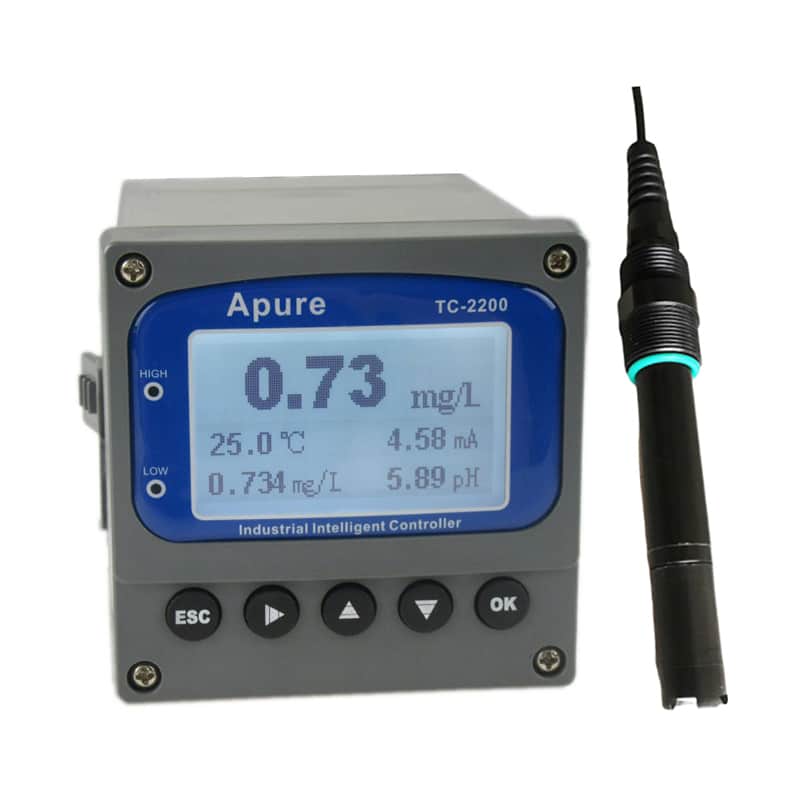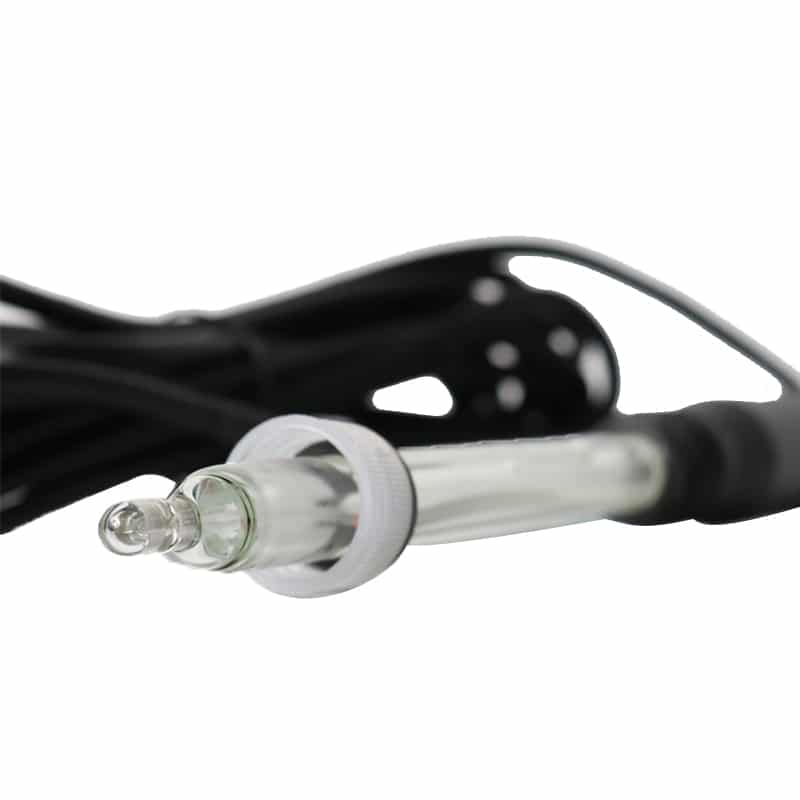Most people are very familiar with the smell of water in their homes, and descriptions like “chemical” or “smelly” are often thrown around in water taste tests. Most families believe that chlorine is the culprit, so how to remove chlorine from the water has become a concern for many families. In fact, many factors can affect the water quality and composition, and the role of chlorine is far more meaningful than thought.
Why add chlorine to the water?
Chlorine is the most widely used disinfectant in water treatment facilities to ensure that the water is clean from the water treatment plant to your home. Because chlorine breaks down and evaporates quickly, it can be difficult to ensure the proper level of chlorine reaches the sink faucet – because the travel time to the water treatment plant varies from home to home. By doing this, the chlorine level in the home is usually on the high side to ensure proper disinfection of the water throughout the journey.
It reduces the side effects of an unclean water cycle for people with waterborne diseases. In addition, the use of chloramines (chlorine plus ammonia) has been a popular water disinfectant recently. Overall, chlorine and chloramines are very useful in keeping the water clean; however, too much chlorine or chloramines in the water may have additional harmful health effects, as both are toxic chemicals.
What is chlorine? What is chloramine?
As mentioned above, both of these chemicals are used to disinfect water in water treatment plants to prevent bacterial growth and other unwanted particles. Chlorine is an essential element that occurs naturally in nature and is used for much more than disinfecting water (i.e. PVC pipes, paper bleaching). Check out this article for residual chlorine.
Chloramines, which are chlorine plus ammonia, are used primarily as water disinfectants and are much more stable than chlorine. However, chloramines do not react with organic materials and produce harmful by-products, as studies have shown chlorine does. However, chloramines are slightly more corrosive, cause rubber deterioration, lead to leaching of pipes, and are more difficult to remove using common filtration techniques.
As more and more studies on the adverse effects of chlorination (too much chlorine) have come to light, water treatment facilities have turned to chloramines with some advantages. That is, chloramines can be present in the water for much longer than regular old chlorine, thereby increasing the flow time of clean water. This property is beneficial to water treatment facilities, but may be detrimental if a homeowner wishes to remove chlorine and chloramines from the water supply.
Is chlorine harmful to drinking water?
Because chlorine is so useful for its intended use in household cleaning, water disinfection and paper bleaching, it is still very harmful to human health at high concentrations and prolonged exposure. It can cause strong irritation to the eyes, upper respiratory tract and lungs during prolonged exposure.
The recommended level in municipal drinking water is no more than 4 ppm (parts per million) or 4 mg/L. As chlorine levels exceed this value, acute side effects such as itching and irritation may occur and become worse as chlorine levels continue to rise.
Therefore, chlorine and chloramines above certain concentration levels can be harmful, especially if other health complications exist to amplify the effects of chlorination. If you are unsure of the quality of the water and the chlorine level, a chlorine sensor or ORP (oxidation reduction potential) sensor can be used to measure healthy chlorine levels directly and indirectly to initiate the process.
What are the side effects of too much chlorine or chloramines in drinking water?
First, the harmful side effects of chlorination are discussed here assuming long-term consumption, not just a glass of water with a high chlorine content.
In any case, one of the biggest recent concerns about chlorine is the disinfection byproduct that occurs when it reacts with organics in the water or plumbing system: trihalomethanes. Trihalomethanes or THMs are not currently regulated by the EPA, only standard levels. The long-term effects of chlorination and THMs are inconclusive, but many studies have shown a higher risk of cancer, reproductive problems and neurological side effects.
On the other hand, chloramines do not react to form THMs, which creates a potential solution for the water disinfection process, but many questions remain unknown about the safety of chloramines. In either case, there is still reason to question the content of your drinking water and that disinfectants are in place to maintain public health. Both sides carry weight and must be kept in balance.
In addition, many people have increased sensitivity to both chlorine and chloramines, which can cause much discomfort if the water application has high levels of them. High levels of these two substances can also cause
- Digestive problems (because chlorine and chloramines are designed to destroy bacteria)
- Skin dryness and irritation
- Aging of clothes and washing machines
- Strange tastes to water-based foods and beverages
- Problems with pets and plants
The more serious problems discussed above have not yet been proven, but many eye-opening effects have occurred in populations with high levels of chlorine and THMs.
- Higher risk of cancer
- Birth defects and reproductive problems
- Neurological effects
- Increased food allergies
Next, we will discuss how to remove chlorine & chloramines from water.
How to measure chlorine in water
The first step in removing chlorine is to see if it is necessary to do so. This measurement can be done indirectly through an ORP sensor. Since chlorine reacts with bacteria and other microorganisms to eliminate them, an ORP sensor can measure the strength of this reaction potential.
Another option is the dpd (diethyl-p-phenylenediamine) test. This test involves dropping dpd into the sample water and comparing the relative intensity of the red color to a color scale to show you the relative amount of chlorine in the water.
Other test kits exist on the Internet, but remember that the test point is very important. For consumers, most people will want to know the chlorine level coming from the tap or after adding chlorine to a swimming pool, which is very simple. However, industrial applications will require more testing along the water distribution line to ensure that proper chlorine levels are maintained throughout the process.
How to remove chlorine and chloramines from water?
Four common and effective methods exist for removing chlorine and chloramines from water.
- Water filtration
- Chemical balancing
- Evaporation
- Ultraviolet lamps
Chlorine removal through water filtration
Various pumps and filtration systems are available for consumer and industrial applications, but the basic concept is the same. Water is pumped through a membrane filter via reverse osmosis before it reaches the end user. Typically, the water wants to balance all the particles in it and will flow from a higher concentration to a lower concentration. In this case, the water filter prevents chlorine, chloramines and other contaminants from entering the lower concentration side, or the clean water side (i.e., reverse osmosis).
These filters are typically found in three main sections: large particle filters, carbon or charcoal filters, and semi-permeable membranes. The large particle filter acts as a pre-filtration step, removing large particles such as dust and dirt. The semi-permeable membrane, which is the final step, removes almost all dissolved solids from the water. Finally, the in-between carbon filter uses activated carbon to filter out volatile organics such as chlorine and chloramines.
One thing to note is that chlorine is easier to remove and will be filtered out by a regular activated carbon filter. Chloramines, on the other hand, are more difficult to remove (because they are more stable) and require more contact with carbon to be filtered out. In this case, catalytic carbon is used to filter chloramines more effectively.
If you are removing chlorine or chloramines, or both, you should consider doing some background research on filter selection. If you want to remove chloramines from water, catalytic carbon filters will serve the filtration job better.
Chlorine removal by chemical equilibrium
In this case, chemical balancing, neutralization or purification all lead to the same result: removal or breakdown of chlorine and chloramines from the water. In a similar way to balancing pH, more chemicals are added to the water to reduce chlorine levels. It may not seem intuitive, but that’s the beauty of chemistry and balancing chemistry.
The most common chemical used to neutralize chlorine and chloramines is potassium metabisulfite or Campden tablets (Campden tablets sometimes use sodium instead of potassium, but the end result is the same). These tablets are often used in brewing operations to achieve the same disinfection effect and remove chlorine. campden tablets are dissolved in water at a rate of 1 tablet per 20 gallons and take about 25 minutes to neutralize the chlorine, then evaporate on their own.
These tablets may have a strong odor, but they are relatively inexpensive, remove chlorine and chloramines, and work quickly.
Chlorine removal by evaporation
As mentioned earlier, chlorine is a volatile chemical, which means that it evaporates easily at room temperature. By leaving the water on the counter in this manner will allow the chlorine to evaporate over time, and boiling the water will further accelerate the process.
This is a natural and cost effective solution to the chlorine problem and only requires time. However, for this reason, this is only applicable to small-scale water applications. In addition, because chloramines are more stable and therefore less likely to evaporate; this method is therefore ineffective for removing chloramines from water.
Chlorine removal with UV light
UV light is a very effective way to remove chlorine and chloramines from water. It uses UV light to break down these chemicals, does not affect the taste of the water, and takes only a few minutes to eliminate. Although, more exposure equals more chlorine and chloramines to break down.
These UV probes and applications can become increasingly expensive and do not filter out large particles or dissolved solids. One must also be wary of prolonged exposure to UV, just as prolonged exposure to sunlight without protection is harmful. These long exposure times should not be a problem for removing chlorine and chloramines from water, but are still a consideration.
Overview
Chlorine and chloramines are very effective methods of water disinfection, accounting for a large portion of the water used for public health cleaning. However, too much of either chemical can lead to unwanted side effects, some of which remain inconclusive, but are worrisome in the long run.
In either case, testing your water for increased levels of chlorine and chloramines is always the first step in preventing these health effects. If chlorine and chloramines need to be removed, check out the four methods for removing these chemicals from water: water filtration, chemical balancing, evaporation, and/or UV light.
These methods can be used in combination, but some methods do not remove both chlorine and chloramines. For example, filtering water with catalytic carbon is necessary to remove chloramines, while regular activated carbon will do a good job of removing chlorine. Evaporation is also a good technique for removing chlorine, but will not remove chloramines. The size and scale of this water removal process should also be considered when choosing a method.
Overall, everyone should have access to clean drinking water. Water disinfectants have made it possible to reduce disease and other waterborne illnesses globally, but it is always worthwhile to test your water for high levels of chlorine and chloramines with a high degree of confidence.
If you’re not sure which chlorine or ORP equipment is best for your needs to determine chlorine levels, or are interested in other water quality analysis equipment or parameters, contact Apure’s professional-level team today.
Extended reading:
Ozonated Water: Principles, Benefits, Applications
Why is water quality important?
Distilled Water vs Purified Water: What’s The Difference?
Solution of water pollution


